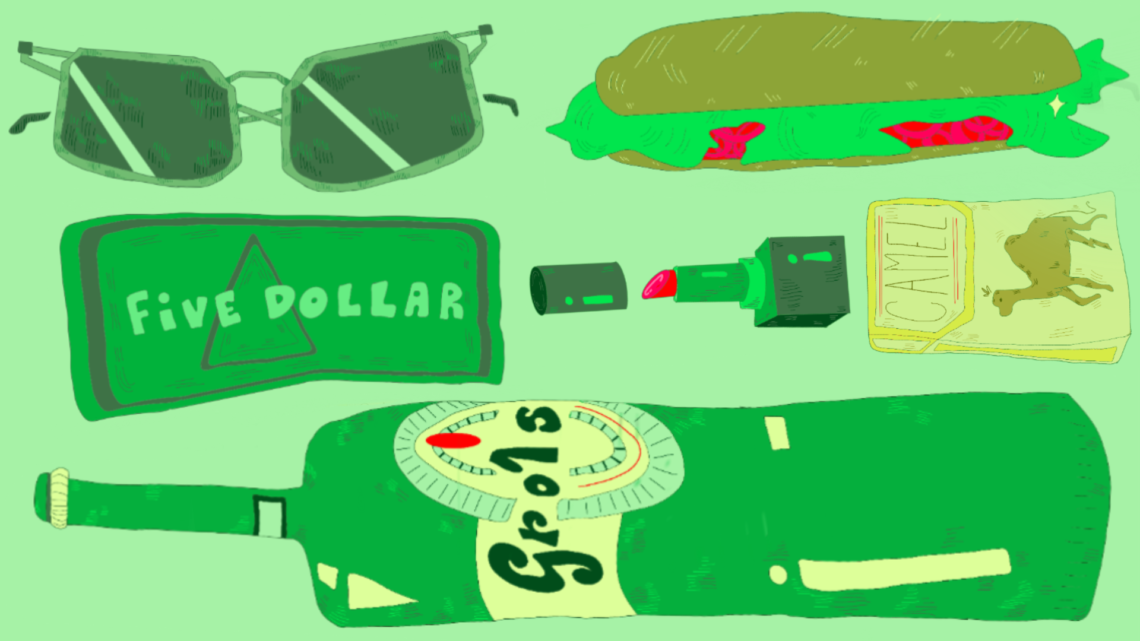The Student Squeeze
The so called „student budget“ is one of the most infamous and important organizing aspects of one´s university experience. Learning how to balance your basic necessities, your social life and whatever addictions that might need funding is an important steppingstone into adulthood. But how exactly do students divide their budget and what does it mean to have it inevitably stretched?
Most students in the Netherlands spend 800 – 1,000 euro a month on living expenses (University of Groningen, 2018) including accommodation, transportation, food, leisure, and miscellaneous items. Despite Gen Z having a bad reputation due to the addictions of the internet and (occasionally) misplaced judgement of older people, it is also proven to be a generation that´s highly conscious of their consumer behavior (NIQ, 2024). In fact, a lot of companies are re-shaping their business models in order to account for their pragmatic and environmental-friendly spending choices (Mintel, 2025). Most students are able to cover their basic necessities like transportation and grocery costs but run into problems when balancing non-essential purchases. Students struggle to balance leisure activities such as dining out, movie-watching, shopping and travelling. Furthermore, most students struggle to manage expenditures on alcohol and tobacco. It has been predicted that university students on average consume 4-9 drinks a week and that 35% of students regularly spend money on nicotine and tobacco products (Elflein, 2024).
Unlike basic necessities which are self-explanatory, the motivations behind non-essential purchases have a lot to do with one´s social circle and past times. Aside from being a staple at most events, most people find it easier to socialize when consuming alcohol and tobacco. For a lot of people turning down a drink at a party can feel like opting out of a conversation altogether. For centuries recreational substances like tobacco and alcohol have been used as a way to bond socially and culturally. Since the beginning of brewing in the Middle East 10,000 years ago, there has been an established link between the consumption of alcohol and one´s social well-being (McKie, 2018). It´s not just the drinking practices, from the uncomfortable European eye contact when toasting to the mandatory bottoms up practiced in East Asia, that shape the stories you tell your friends, but the lived experiences made while going out for a drink that make it such a significant social act. It is therefore understandable why students would struggle passing up on the local bar hangout.
Due to these social demands, a beer on a night out can amount to costing 900 euros a year for students. It is in this area that students report going the most over budget (Lalmuanpuia, 2021), as it can be difficult to decide between saving costs and missing out on an experience, no matter how seemingly repetitive or mundane. This internal struggle manifests itself through intense feelings of guilt or anxiety associated with the spending of money (NHS, 2021). Many students report feelings of stress and incompetence after having spent money on non-essential purchases. Although it is important to be wary of the money you are spending, there is also great value associated with engaging in non-essential purchases. These moments of leisure, such as grabbing coffee with a friend or catching the latest Luca Guadagnino film at your one’s (local) cinema, contribute to one’s personal relationships and health. It can be increasingly difficult to remember that, especially as we grapple with today´s prevalence of hyper-productivity and tendency to reward ascetic behaviors, but there is a lot to gain from the ways in which one chooses to relax.
In order to account for the occasional “sweet treat” or the rigorous pack a day, students will often find themselves stretching their bank accounts to impressive ends. Whether that be ramen noodles for dinner for the rest of the week or more dramatically, solitary confinement, students need to account for the deficit one way or another. This often means forgoing the social gatherings and activities that lead to the deficit in the first place. While these compromises may seem trivial in the moment, they add up—understanding and implementing the balancing needed for all your purchases is vital. The considerable positive and negative effects that can be learned from the seemingly inconspicuous student budget go on to shape your biggest life and financial decisions. Like most things, understanding primarily how purchases make you feel, is key to managing your financial and personal well-being.
References:
Barron, C. (2016). If You Fear, Shun or Avoid Pleasure. Psychology Today. https://www.psychologytoday.com/us/blog/the-creativity-cure/201606/if-you-fear-shun-or-avoid-pleasure
Elflein, J. (2024, March 21). Tobacco or nicotine product use among college students by frequency U.S. 2021. Statista. https://www.statista.com/statistics/826360/cigarette-use-among-college-students-us/
Lalmuanpuia, N. (2021). A STUDY ON STUDENT BUDGETING AND SPENDING BEHAVIOUR AMONG THE COLLEGE STUDENTS OF AIZAWL. https://jtc.edu.in/wp-content/uploads/2022/04/Nicky-Lalmuanouia.pdf
McKie, R. (2018, September 1). 10,000 years of cheers: why social drinking is an ancient ritual. The Observer. https://www.theguardian.com/society/2018/sep/01/social-drinking-moderation-health-risks
Mintel. (2025, February 20). The Future of Consumer Behaviour in the Age of Gen Z. Mintel. https://www.mintel.com/insights/consumer-research/the-future-of-consumer-behaviour-in-the-age-of-gen-z/
NHS. (2021, May 4). Money worries and mental health – Every Mind Matters. Nhs.uk. https://www.nhs.uk/every-mind-matters/lifes-challenges/money-worries-mental-health/#how-money-affects-mental-health
NIQ. (2024, July 29). How Gen Z Consumer Behavior Is Reshaping Retail. Nielseniq.com. https://nielseniq.com/global/en/insights/analysis/2024/how-gen-z-consumer-behavior-is-reshaping-retail/
University of Groningen. (2018, October 2). Living expenses. University of Groningen. https://www.rug.nl/education/master/international-students/financial-matters/living-expenses?lang=en

Célia Mortureux is a second-year Communication Science Bachelor student, at the University of Amsterdam. She has a vivid passion for painting and music, always striving to learn more. She loves to play around with many mediums, like photography, digital illustration, and traditional model drawing. She can often be spotted sketching in cafes or parks on a sunny day with an overpriced oat chai latte. She is also politically engaged, particularly in ocean protection advocacy.
You can follow her works at @doodling_un
